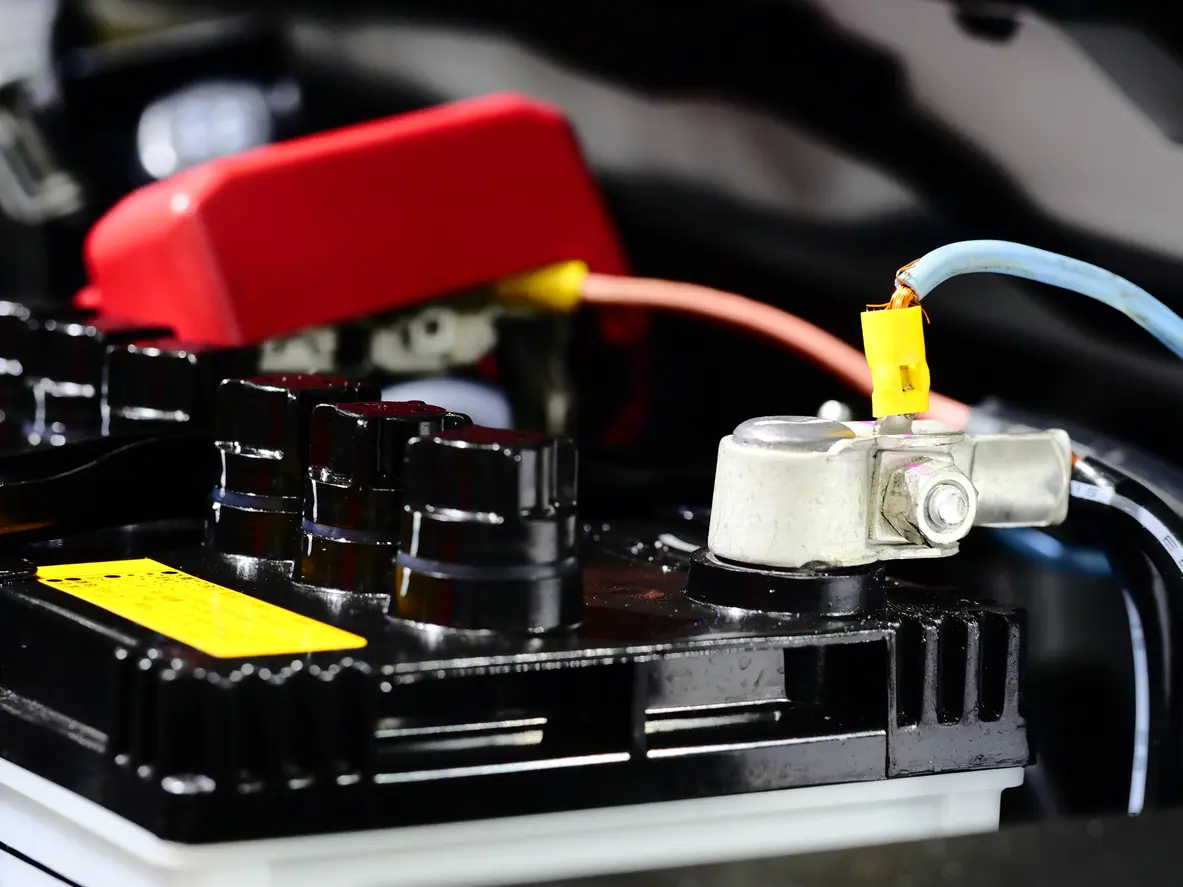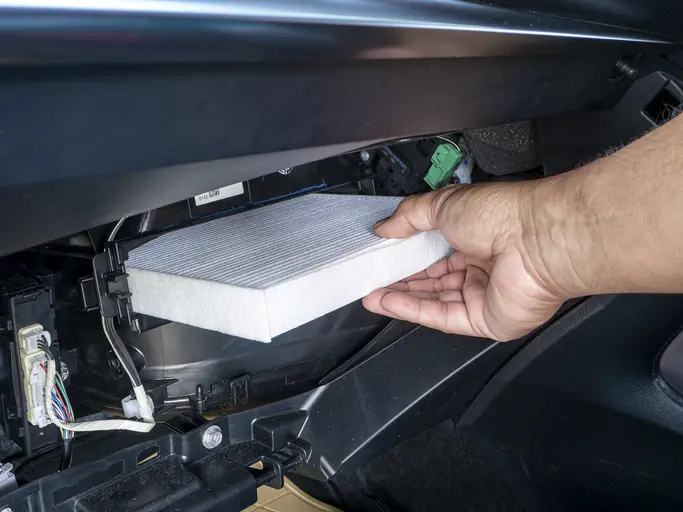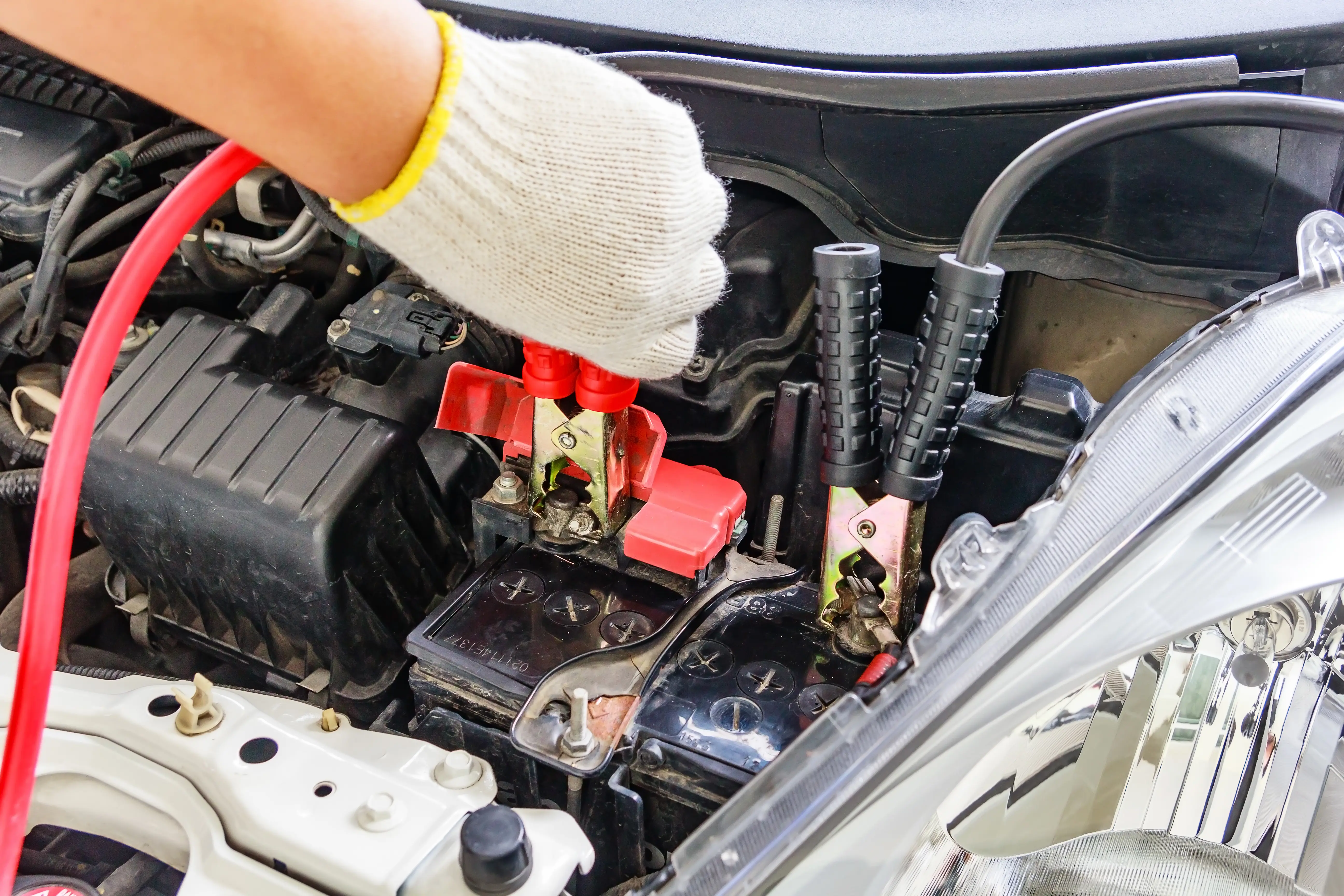Lithium-ion battery construction
All types of batteries comprise a collection of cells sealed in a container with an electrolyte. Batteries differ in their construction, which electrolyte they use, and how the cells come into contact with it.
A lead-acid battery, such as the 12 V in your vehicle, has six cells, each with positive and negative plates. The most common construction has all cells flooded in an electrolyte. This type of battery is charged by the engine in a gas-powered vehicle and by the high-voltage battery in an EV.
An EV’s lithium-ion battery, however, contains up to several thousand cells. Ions pass back and forth through an electrolyte in each cell to create energy. Because EVs lack an engine, they charge the lithium-ion battery externally and through regenerative braking.
Temperature and EV batteries
The optimal temperature for a lithium-ion battery is about 21.5 ˚C. Operating a little above or below this range will hardly affect battery performance.
However, if the battery heats up too much, chemical processes speed up. If the temperature drops too much, they slow down. An EV can lose up to 41% of its battery’s stores when operated in hot or cold environments with the HVAC system on.
But what is “too hot” and “too cold”? According to a 2023 study by Geotab, EV range at 40 ˚C was reduced to 80% on average. At -20 ˚C, though, range was reduced to 50% on average. The company analyzed data from 4,200 EVs and 5.2 million trips.
Let’s dive deeper into how this works.
The effects of heat
Heat increases the chemical reactions in a lithium-ion battery, causing it to charge and dissipate that charge faster. When the battery temperature is too high, avoid high-speed charging.
In extremely rare situations, thermal runaway may happen: the battery becomes so hot that the chemical processes increase speed, creating more heat, which can lead to combustion.
Should you see any smoke coming from your EV, stop driving and contact an expert.
Are EV batteries protected against the risk of fire?
Electric car batteries are extremely well protected against damage. In addition, the risk of fire is almost zero. If the battery is damaged or, for example, if a charging station fire occurs, it will take a long time before the battery actually catches fire.
The battery is mounted on the base of many electric cars. The external impact from below is one of the leading causes of battery damage and fire.
Do you think your electric car battery has been damaged after an impact? As a safety measure, have your car checked by a NexDrive specialist.
The effects of cold
Cold can affect EV battery performance, though it rarely results in damage. As the temperature drops, chemical reactions slow down, and the battery generates, stores, and discharges less power.
Battery thermal management system
EVs use software and components--together, the BTMS--to keep the vehicle’s battery as close to the optimal temperature as possible. Because the high-voltage battery always produces heat, this system cools it down in one of two ways:
- Indirect cooling: a refrigerant is pumped around the battery and then passed through a radiator or similar component to remove the heat. This is currently the more common method.
- Direct immersion cooling: A cooling agent covers the battery cells. This method is considered safer.
Your EV’s battery thermal management system monitors the battery’s temperature and adjusts the coolant as needed. However, depending on the temperature outside, the BTMS will need more or less energy from the battery to do its job.
That’s why manufacturers recommend keeping your vehicle plugged in when your EV is parked in a very hot or cold environment. This will give the BTMS power to continue operating and keep your high-voltage battery safe.
Furthermore, do not use fast charging (level 3) in high temperatures. Fast charging creates heat by speeding up the chemical reactions in a high-voltage battery. Although this rarely presents a problem under comfortable temperatures, it can lead to battery malfunction and even incineration if it’s too hot outside.
How to help your BTMS
Follow these tips to help your BTMS maintain an efficient battery temperature without requiring too much energy:
- Park in shade in summer and sun in winter.
- Plug in your vehicle when parked.
- Have your battery and BTMS regularly inspected by an automotive technician trained in EV maintenance and repair.
- Focus on heating the driver and passengers first and air second by prioritizing steering wheel and seat heating over cabin heating.
For questions about your EV’s battery thermal management system, visit your nearest NexDrive service centre.

Can you jump-start a hybrid or electric vehicle?
Need to jump-start your EV or hybrid? Learn what functions the high-voltage and auxiliary batteries in your vehicle serve so you can do so with confidence.

How to maintain your EV’s filters
Gas-powered and electric vehicles (EVs) sometimes have different filter requirements. Learn what filters EVs have and how to maintain them.

How to Jump-Start an EV battery
Dealing with a dead battery is always a nuisance. But what if you have an electric vehicle? Learn how to jump-start a dead EV with this guide.
